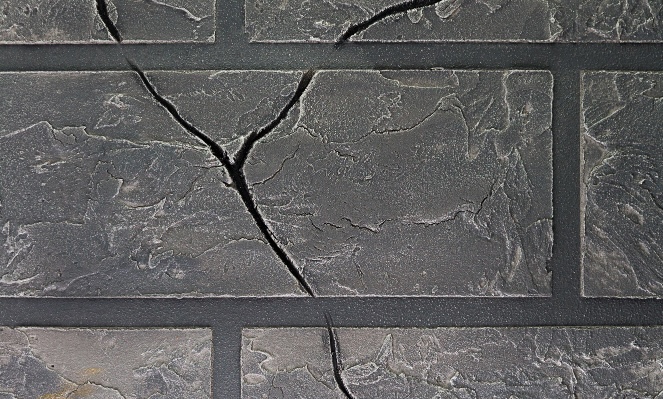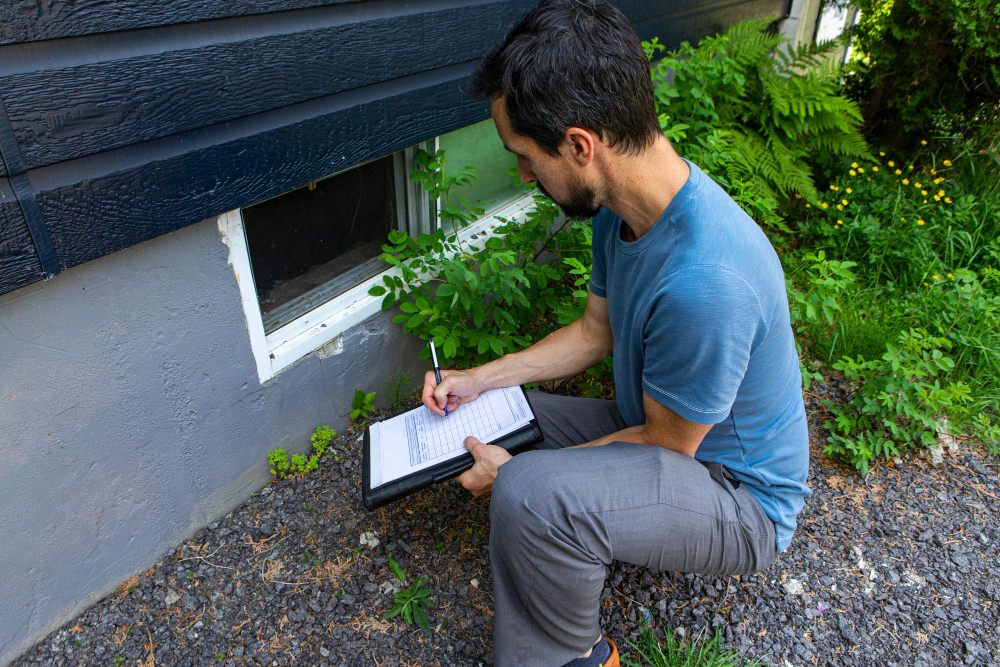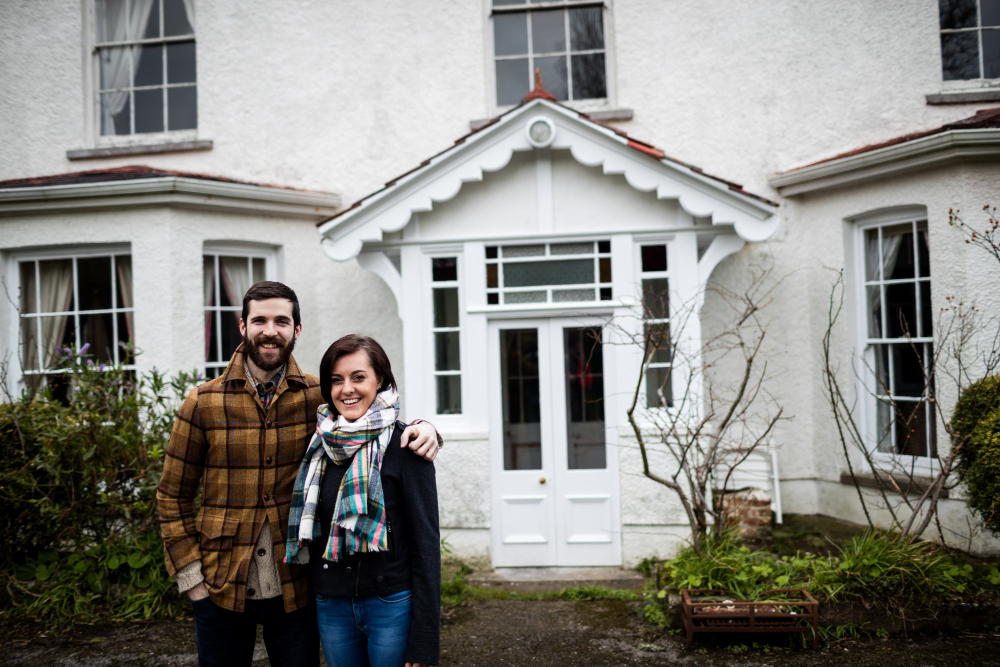
What Is Subsidence? Signs, Causes, & Prevention
Subsidence is when the ground beneath your home shifts or sinks, reducing the support your foundations rely on. The building often shows early clues before real damage sets in.
This guide explains what is subsidence, the warning signs to watch for, how movement is confirmed, the repairs that fix the cause, and how cover usually applies so you can act early and limit disruption.
The UK definition of subsidence
In UK practice, subsidence means the downward movement of the foundations caused by change in the supporting strata, and it is distinct from settlement. That formal definition is used by surveyors and underpins insurer wording and decisions.
Insurance policies typically define subsidence along the same lines and separate it from bedding-in or made ground consolidating soon after a property was built. For example, policy definitions specify downward movement of the ground beneath a building, excluding simple bedding down within a set period after construction.
Survey and valuation reports record whether movement is active or historic. Active movement means changes are ongoing and need stabilising measures. Historic movement indicates the issue occurred in the past, has been resolved, and is not progressing. RICS consumer guidance explains that surveyors consider cause and activity, and may recommend further tests such as drain or soil investigations.
Subsidence vs settlement vs heave vs landslip
These terms describe different kinds of ground movement. Getting them right avoids the wrong diagnosis and the wrong repair.
Settlement
The initial compression of the ground soon after a property built on fill or soft ground takes load. Because it occurs shortly after construction and then tails off, it is not the same as subsidence and is normally treated differently in reports and insurance decisions.
Heave
The upward movement of the ground due to soil swell, often when moisture returns to clay after tree removal. The British Geological Survey notes shrink–swell behaviour can move foundations, services and floors, particularly within the upper two metres of ground.
Landslip or landslide
iThe lateral movement of sloping ground, not the building’s foundations failing in place. Insurance policies group landslip with subsidence and heave under ground movement, but the mechanism differs. Landslip moves the whole plot sideways and is treated separately in standards and policy definitions.
Mislabel a case and you risk the wrong fix. Treating settlement as subsidence can lead to unnecessary underpinning, while missing heave after tree works can see repairs fail once soils rehydrate. Insurers and lenders rely on the correct categorisation for claims, repairs and lending decisions.
Movement types at a glance
What are the common causes of subsidence?
Clay shrinkage during long periods of dry weather is the classic UK driver. Clay soils change volume as moisture moves in and out. The BGS highlights the London Clay and other cohesive soils with high shrink–swell potential, noting seasonal moisture variations and vegetation as key influences.
Some common causes are:
- Clay soil and other cohesive soils shrinking in long periods of dry weather.
- Tree roots and the root system of high-demand species absorb moisture from the soil beneath.
- Leaking drains washing out fines, plus historic mining activity or made ground in mining areas.
- Nearby building work or dewatering tipping a marginal site into movement.
Tree roots matter for two reasons. Certain species absorb a lot of moisture, and a large root system near shallow foundations can sustain drier soil beneath during prolonged dry spells. The effect is greater in clay soil and near older extensions with shallow footings. Managing trees is therefore a central part of prevention and repair.
Leaking drains and service pipes can wash away fines, soften clay and form voids. That changes support at foundation level and triggers local ground movement. RICS guidance routinely recommends CCTV drain surveys where cracking patterns suggest a service defect.
Historic mining activity and underground cavities remain a notable UK risk in defined mining areas, where separate statutory rights and claims exist if coal mining subsidence damage occurs (https://www.gov.uk/claim-for-subsidence-damage-caused-by-coal-mining). GOV.UK
Finally, flood–drought cycles linked to changing weather patterns can swing soils between saturated and desiccated states, increasing risk periods for ground movement. Structural engineering bodies have warned of increased exposure during hot, dry summers.
Wider impacts beyond the plot
Shrink–swell and related processes can damage foundations, external brickwork, highways and buried services, so issues can propagate along roads and utility corridors. This is why it pays to consider the street and local area, not only the garden boundary.
What warning signs should I look for?

The signs of subsidence often cluster around weak points. You may see diagonal cracks radiating from windows and doors, often tapering and wider at one end. Decorative shrinkage often shows up as minor cracks that neither widen nor migrate, which helps separate cosmetic issues from structural patterns. BRE’s approach to assessing cracking considers width, pattern, and whether cracks are increasing over time, and professionals use this to gauge significance.
What to check before calling a professional:
- Tapering, diagonal cracks from doors or windows, wider at one end.
- Doors and windows sticking after dry weather, with distorted window frames.
- Gaps at skirting or between sills and external brickwork, plus uneven floors.
- Watch for other signs such as rippled wallpaper near ceilings or fresh gaps that appear after dry spells.
Patterns seen on both the inside and outside faces carry more weight than isolated hairline cracks. In rarer cases you may see noticeable leaning at a chimney or gable end.
Doors and windows may start sticking as frames rack and distort. Wallpaper can ripple or tear where it meets ceilings with no visible plaster line. Outside, stepped cracking in external brickwork or broken service pipes can signal movement consistent with a subsidence issue. By contrast, other cracks that keep widening or migrating across materials deserve prompt attention.
Not all cracks are equal though. Hairline cracks from thermal movement or drying plaster are common and do not always indicate a problem; progression over time is the tell tale sign.
How do I check and confirm movement?
Start by recording what you see. Photograph subsidence cracks with a ruler or coin for scale, log dates and approximate ground level locations, and note any weather shifts such as dry weather periods. A simple crack diary helps a surveyor or engineer understand timing and progression. BRE monitoring guidance and common practice use crack width and change over time to determine activity.
Build a useful evidence pack
- Photograph cracks with a scale; log dates, weather and location.
- Note suspected triggers, for example cracks caused after a long dry spell or following nearby excavation.
- Account for nearby utilities, especially leaking drains or other water leaking signs.
- If cracks progress, book a chartered surveyor or structural engineer for a professional structural survey.
- Escalate quickly if you record large cracks exceeding about 3 mm that keep widening.
This simple record helps flag issues early rather than relying on a single snapshot.
Monitoring can run through seasons. Crack gauges and level surveys capture whether movement is ongoing or stabilised. This helps decide whether to wait for seasonal recovery, adjust trees or drainage, or progress to structural work. The principle is to gather enough evidence to avoid unnecessary or premature major works.
This simple record helps flag issues early rather than relying on a single snapshot.
What to do if you suspect subsidence (first 48 hours to 12 months)
Make the home safe and avoid sudden changes in load. Do not rush cosmetic repairs that could hide warning signs.If the evidence points towards a subsidence issue, and your buildings cover includes this risk, notify your insurer promptly with supporting evidence such as photos and survey findings.
Note: rivr does not offer buildings cover for properties affected by subsidence
Most insurers will arrange investigations, which can include crack monitoring over a full drying and wetting cycle to see if further movement occurs. An RICS member can diagnose the likely cause and recommend drain and soil surveys where appropriate.
Repair options and when they’re used

The golden rule is to fix the cause first. If drainage issues or water leaking have undermined support, the remedy is to repair the drains and stabilise the soil beneath. CCTV surveys are a common, minimally invasive way to confirm defects before excavation and repair, and they are widely used in subsidence investigations.
For vegetation, arboricultural advice helps decide whether tree roots should be managed through pruning or pollarding, or whether removal is justified. Because cohesive soils such as clay soil recover moisture slowly, changes to tree cover need careful planning to avoid heave. BGS emphasises vegetation and weather as drivers of shrink–swell, reinforcing the need for expert input and staged works.
What typically comes first
- Fix the cause: drainage issues and leaks first, then make-good.
- Manage vegetation: prune or pollard with arboricultural advice; remove only where justified.
- Improve ground locally with resin injection where soil type and access allow.
- Underpin only if significant subsidence persists after cause removal and monitoring.
Taken together, these steps fix subsidence by removing the driver before any reinforcement is considered.
In severe cases, underpinning transfers the load to deeper, stable strata. It is usually the last resort once the cause is addressed and monitoring shows significant subsidence persists or the property’s foundations have inadequate bearing. Professional design and consent checks are essential. Guidance from structural engineers underscores a diagnosis-led pathway rather than jumping straight to underpinning.
Listed buildings and conservation areas add permissions and oversight. Tree works can require consent; underpinning design must protect fabric and detail. If in doubt, your local authority conservation officer and an accredited engineer should be involved from the outset.
What will subsidence repairs cost and how long will they take?

Costs vary with cause, extent, and access. Fixing leaking drains may be modest, while extensive tree works, monitoring and localised rebuilding add time. Underpinning is disruptive and more expensive, so it is reserved for defined scenarios after investigation. Typical programmes include investigation, potential 3 to 12 months of monitoring through dry and wet seasons, and then remedial works. Institution of Structural Engineers highlights that dry summers can lengthen investigation windows due to seasonal effects.
Many households stay in place during investigations and repairs, though some works require decanting rooms or short-term alternative accommodation. The precise approach depends on safety, access and dust or noise levels. Where insurance applies, policy terms on alternative accommodation will set the limit.
Typical sequence of checks and works
What repairs typically cost in the UK
Based on RICS, ABI, Checkatrade, Terrain Surveys, MyBuilder and IStructE; figures are indicative only. Get professional diagnosis, written quotes, and confirm policy excesses and limits.
Insurance: cover, excesses, and the claims journey
Buildings insurance generally covers subsidence, heave and landslip to the structure, subject to exclusions and an elevated subsidence excess. The Association of British Insurers explains that most policies have an excess of around £1,000 for a subsidence claim and that garden walls or drives are not usually covered unless the home is damaged at the same time. Insurers handle subsidence insurance claims with a dedicated excess and a cause-first investigation pathway.
The claims process typically starts when you report the problem promptly with photos and dates. Insurers then arrange expert inspection and, if needed, monitoring. Where covered, policies may also include trace and access for finding leaks, and provisions for alternative accommodation during works. river, for example, includes leak detection and repair benefits and explains that any large-loss excess waiver does not apply to a specific subsidence excess.
Always check your schedule for limits and endorsements.
Subsidence claims can affect future premiums and require disclosure at renewal or when shopping for cover. ABI explains what to look out for, including the need to disclose past claims and provide evidence of successful repairs if you change provider.
Using an insurer-appointed surveyor or an independent structural engineer both work. The key is that the professional has the right expertise and that the insurer agrees scope and cause. RICS sets out the typical pathway, from initial assessment to specialist surveys, and stresses that most cases can be rectified once the cause is addressed.
Buying, selling, and letting with subsidence history

For buyers, due diligence means reviewing survey reports, monitoring data, completion certificates and guarantees for any underpinning or drain repairs. For subsidence properties, complete documentation helps lenders and insurers weigh any residual risk. In mining areas, you can check risk and, where relevant, claim routes under separate legislation for coal mining activity related damage.
Paperwork most buyers expect
- A clear structural survey or chartered surveyor letter showing stability.
- Drain CCTV footage and completion certificates for remedial works.
- Guarantees for underpinning or ground improvement where applicable.
Lenders usually want evidence that historic movement has stabilised and that the cause has been fixed. Sellers must disclose material facts, including prior claims and underpinning, through standard property information forms. Prospective buyers then weigh the risk in light of documentation and local area context.
Landlords should ensure the home remains fit for habitation. Ongoing monitoring, maintenance of gutters and downpipes, and prompt response to leaks reduce the risk of subsidence damage disrupting tenancies. Where an insured loss displaces tenants, policies may contribute towards loss of rent or alternative accommodation, subject to terms.
Prevention and risk reduction (especially on clay soils)

Tree choice and placement help on shrinkable soils. As a rule of thumb, avoid planting high water-demand species close to shallow foundations, and keep up with maintenance so the root system does not overreach the building line. Because species absorb moisture differently, local arboricultural advice pays dividends, especially for mature specimens on clay soil sites.
Light maintenance that pays off
- Choose species wisely and keep regular pruning to manage tree roots.
- Avoid leaks by maintaining gutters, downpipes and soakaways away from foundations.
- Keep a periodic crack log to spot signs early and separate natural movement from risk.
For extensions on shrinkable soils, foundation depth and type should reflect the local soil type, presence of trees, and expected moisture change. NHBC underlines how depth choices help control ground movement and minimise risk of further movement in droughts.
During prolonged dry spells, light, regular watering of nearby landscaping can reduce severe desiccation, though you should not attempt to soak foundations. A simple seasonal crack log helps you spot signs early and distinguish natural movement in finishes from progressive patterns that may indicate subsidence caused by roots or leaks.
Special cases and edge conditions
Basements interact with underpinning decisions because excavation, waterproofing and load paths change how the building meets the ground. In extreme cases, local voids can develop and a building sinks suddenly, which calls for urgent safety assessment by a competent professional. Seek an engineer’s advice before significant alterations if movement is suspected.
In flats and leasehold buildings, responsibilities for investigating and repairing ground subsidence usually sit with the freeholder through the building insurance. Leaseholders should notify the managing agent early and share photos and logs.
In mining areas, check the local area risk and rights. Coal mining subsidence is handled under a distinct framework, with claims through the relevant authority.
For new-build homes, warranties such as NHBC cover structural defects, and builders should have followed standards on trees, foundations and drainage. Keep paperwork accessible, as British insurers and lenders may request it where movement is suspected.
Glossary
Resources
- RICS subsidence guide: Plain-English definitions, how surveyors diagnose movement, and next steps.
- British Geological Survey: clay shrink–swell: Why clay soils change volume, risk mapping, and what that means for homes and services.
https://www.bgs.ac.uk/geology-projects/shallow-geohazards/clay-shrink-swell/ - Institution of Structural Engineers: subsidence guidance: Engineer-led pathway for investigation, monitoring, and appropriate repair options.
- BRE: assessing cracks in houses: How to read crack width, pattern, and progression to separate cosmetic from structural issues.
- ABI: subsidence and home insurance: Typical cover, subsidence excess, exclusions, and what insurers look for.
Next steps
- Keep a simple crack and monitoring log with dated photos and measurements.
- Book an RICS chartered surveyor or structural engineer if the signs of subsidence are present.
- Contact your insurer with dates, photos, and any reports so the claims process can begin.
If you need guidance on how to document subsidence-related issues, a professional surveyor or structural engineer can help. rivr cannot offer buildings cover for properties with confirmed or suspected subsidence
Read more
Frequently asked questions
Typical signs include diagonal cracks near doors or windows, sticking windows, rippled wallpaper with no plaster cracks, and uneven floors. Outside, look for stepped cracks in brickwork or movement in paving.
If you spot these, monitor them and seek a professional opinion.
Wider, tapering cracks over roughly 3 mm, cracks that keep growing, or cracks across both the inside and outside faces of the same wall are red flags. Most cracks from drying plaster are minor, but progressive patterns, especially near openings, need a professional view.
A chartered surveyor or structural engineer will assess cracks and may recommend monitoring, CCTV drain surveys or soil analysis. Monitoring over several months helps determine if movement is ongoing or historic.
Yes. Rivr includes subsidence cover under buildings insurance, subject to a higher excess (typically £1,000). Some high-risk locations may require review by underwriters, so always check your schedule for confirmation.
Cost depends on the cause and extent. Local drain or patch repairs may be modest, while underpinning or tree-root management can be costly and time-consuming. Hot, dry summers can also increase risk and investigation time.
Often yes, provided the property is safe. Major repairs may require you to move out temporarily. Rivr includes up to 36 months of alternative accommodation cover while insured repairs are carried out.
Subsidence repairs can take several months to years. Monitoring is often required through wet and dry seasons to confirm movement before any permanent works can begin.
Hairline cracks from plaster drying, thermal movement, or lintel failure over a window can mimic subsidence. The pattern and context usually differ. A structural survey distinguishes finish-related defects from foundation movement.
Ask for past reports, monitoring records, completion certificates, and guarantees for any subsidence repairs. In former mining areas, you can also check official records and compensation routes for land movement via GOV.UK.
Often yes, if the cause has been repaired, the structure is stable, and you have full documentation. Lenders and insurers will ask for engineer or surveyor reports confirming the property’s stability and the price may reflect the history. A clear engineer or RICS report is essential.


.jpg)


